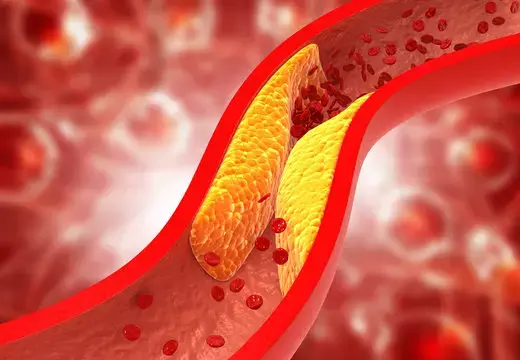- Home
- Medical news & Guidelines
- Anesthesiology
- Cardiology and CTVS
- Critical Care
- Dentistry
- Dermatology
- Diabetes and Endocrinology
- ENT
- Gastroenterology
- Medicine
- Nephrology
- Neurology
- Obstretics-Gynaecology
- Oncology
- Ophthalmology
- Orthopaedics
- Pediatrics-Neonatology
- Psychiatry
- Pulmonology
- Radiology
- Surgery
- Urology
- Laboratory Medicine
- Diet
- Nursing
- Paramedical
- Physiotherapy
- Health news
- Fact Check
- Bone Health Fact Check
- Brain Health Fact Check
- Cancer Related Fact Check
- Child Care Fact Check
- Dental and oral health fact check
- Diabetes and metabolic health fact check
- Diet and Nutrition Fact Check
- Eye and ENT Care Fact Check
- Fitness fact check
- Gut health fact check
- Heart health fact check
- Kidney health fact check
- Medical education fact check
- Men's health fact check
- Respiratory fact check
- Skin and hair care fact check
- Vaccine and Immunization fact check
- Women's health fact check
- AYUSH
- State News
- Andaman and Nicobar Islands
- Andhra Pradesh
- Arunachal Pradesh
- Assam
- Bihar
- Chandigarh
- Chattisgarh
- Dadra and Nagar Haveli
- Daman and Diu
- Delhi
- Goa
- Gujarat
- Haryana
- Himachal Pradesh
- Jammu & Kashmir
- Jharkhand
- Karnataka
- Kerala
- Ladakh
- Lakshadweep
- Madhya Pradesh
- Maharashtra
- Manipur
- Meghalaya
- Mizoram
- Nagaland
- Odisha
- Puducherry
- Punjab
- Rajasthan
- Sikkim
- Tamil Nadu
- Telangana
- Tripura
- Uttar Pradesh
- Uttrakhand
- West Bengal
- Medical Education
- Industry
Elevated lipoprotein(a) and CAC score combo independently Linked with ASCVD Risk

Elevated lipoprotein(a) [Lp(a)] and coronary artery calcium (CAC) score are individually associated with increased atherosclerotic cardiovascular disease (ASCVD) risk. A recent study suggests that a combination of Lp(a) and CAC is also independently associated with ASCVD risk. The study findings were published in the Journal of the American College of Cardiology on February 21, 2022.
While CAC has become a more-routine clinical test, the medical community has not yet embraced Lp(a) in the same way because the question of what to do about an elevated measure remains unanswered. Also, the relationship of Lp(a) to coronary artery calcium (CAC) scores are understudied. Therefore, Dr Anurag Mehta and his team conducted a study to investigate the independent and joint association of Lp(a) and CAC with ASCVD risk.
In this study, the researchers included 4,512 asymptomatic participants of the MESA study and 2078patiens from the DHS (Dallas Heart Study). The researchers measured plasma Lp(a) and CAC were measured at enrollment and observed 476 incident atherosclerotic cardiovascular disease (ASCVD) events over 13.2 years follow-up. They determined elevated Lp(a) was defined as the highest race-specific quintile, and 3 CAC score categories were studied (0, 1-99, and ≥100). They evaluated the associations of Lp(a) and CAC with ASCVD risk using risk factor–adjusted Cox regression models.
Key findings of the study:
- Upon analysis, the researchers found that elevated Lp(a) and CAC scores (1-99 and ≥100) were independently associated with ASCVD risk (HR: 1.29; HR: 1.68 and HR: 2.66, respectively). However, they observed no interaction of Lp(a)-by-CAC.
- Compared with participants with nonelevated Lp(a) and CAC = 0, they found that those with elevated Lp(a) and CAC ≥100 were at the highest risk (HR: 4.71), and those with elevated Lp(a) and CAC = 0 were at a similar risk (HR: 1.31)
- They observed similar findings when guideline-recommended Lp(a) and CAC thresholds were considered and noted that the findings were replicated in the DHS.
The authors concluded, "Lp(a) and CAC are independently associated with ASCVD risk and may be useful concurrently for guiding primary prevention therapy decisions."
In an accompanying editorial, Dr Sotirios Tsimikas wrote that this study provides important insights into Lp(a) pathophysiology with CAC, implications for clinical care, and the ability to identify the patients most likely to benefit from Lp(a) lowering. Both Lp(a) and CAC should be more broadly applied in clinical care settings in patients without prior ASCVD to identify those that most likely will benefit from more aggressive therapy and, in the future, from Lp(a)-lowering therapies.
For further information:
Mehta A, Vasquez N, et al. Independent association of lipoprotein(a) and coronary artery calcification with atherosclerotic cardiovascular risk. J Am Coll Cardiol. 2022;79:757-768.
Medical Dialogues Bureau consists of a team of passionate medical/scientific writers, led by doctors and healthcare researchers. Our team efforts to bring you updated and timely news about the important happenings of the medical and healthcare sector. Our editorial team can be reached at editorial@medicaldialogues.in.
Dr Kamal Kant Kohli-MBBS, DTCD- a chest specialist with more than 30 years of practice and a flair for writing clinical articles, Dr Kamal Kant Kohli joined Medical Dialogues as a Chief Editor of Medical News. Besides writing articles, as an editor, he proofreads and verifies all the medical content published on Medical Dialogues including those coming from journals, studies,medical conferences,guidelines etc. Email: drkohli@medicaldialogues.in. Contact no. 011-43720751


